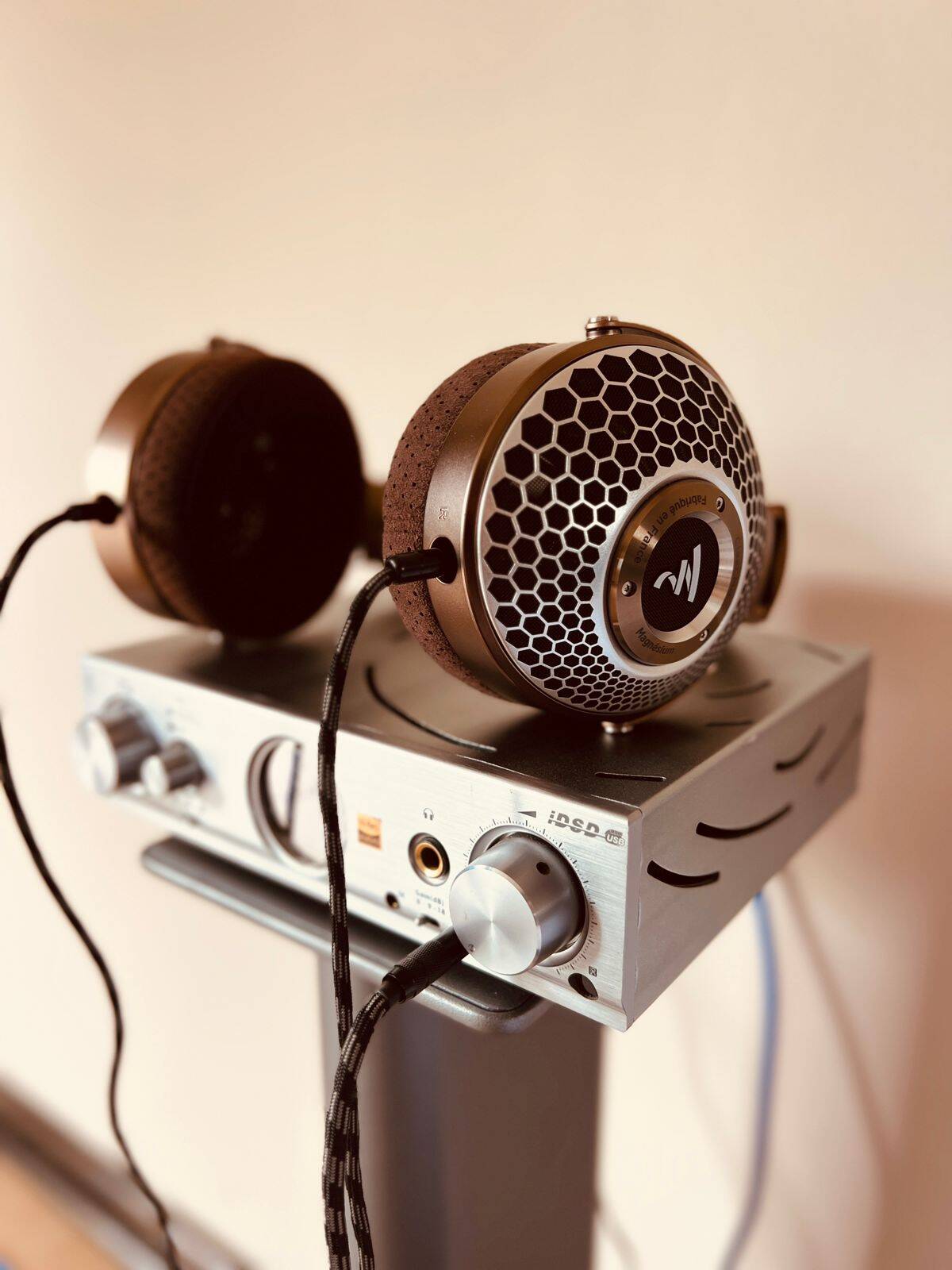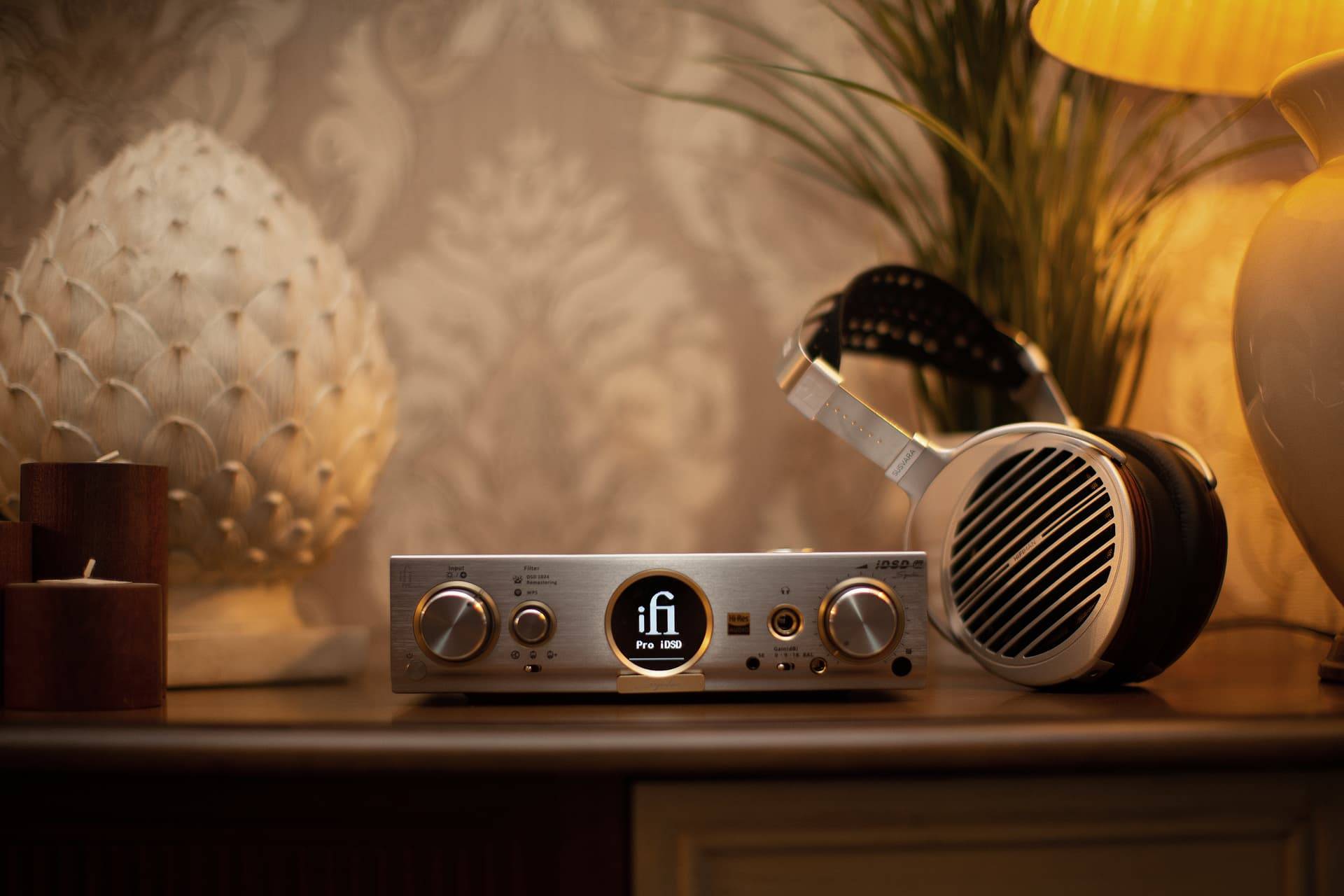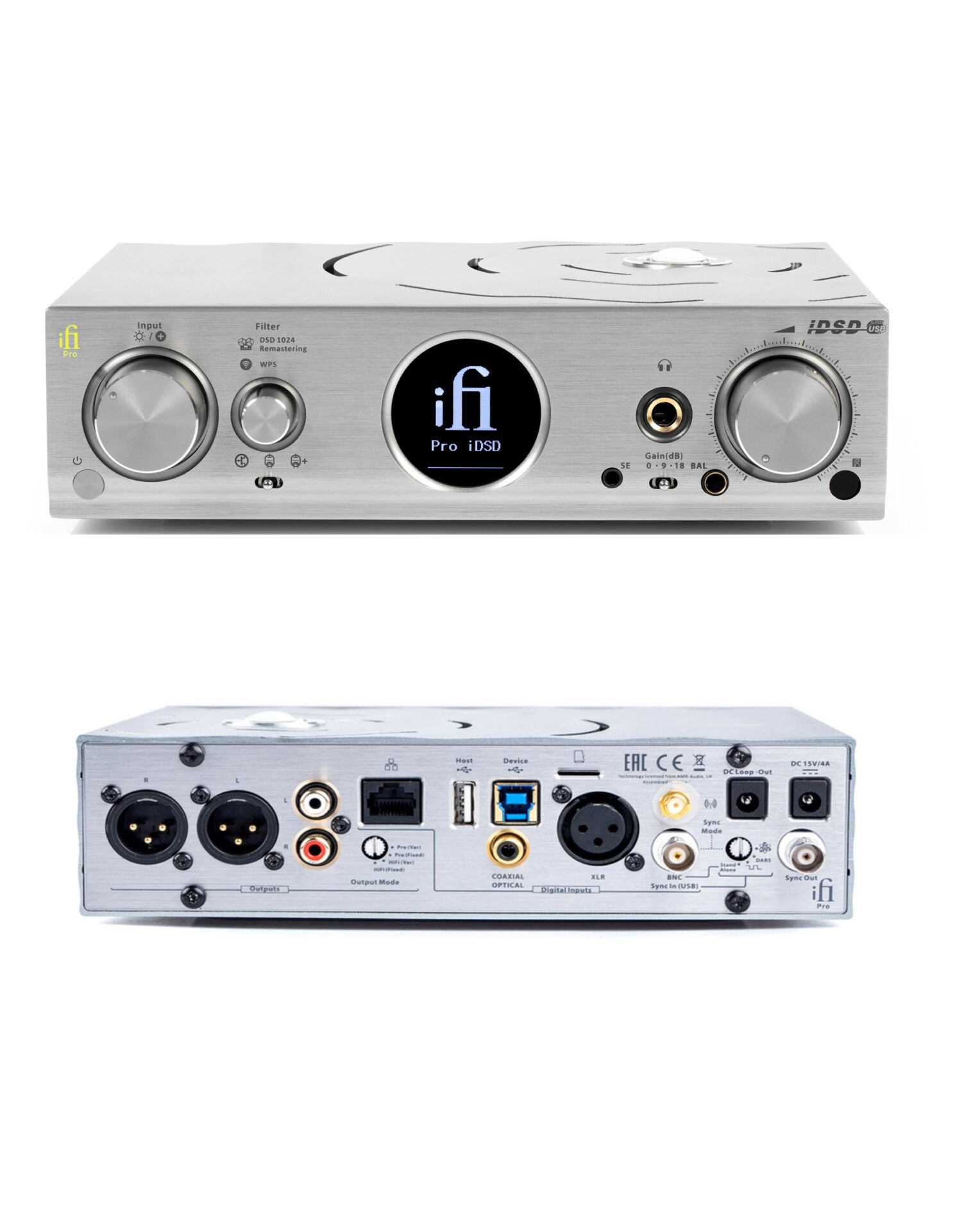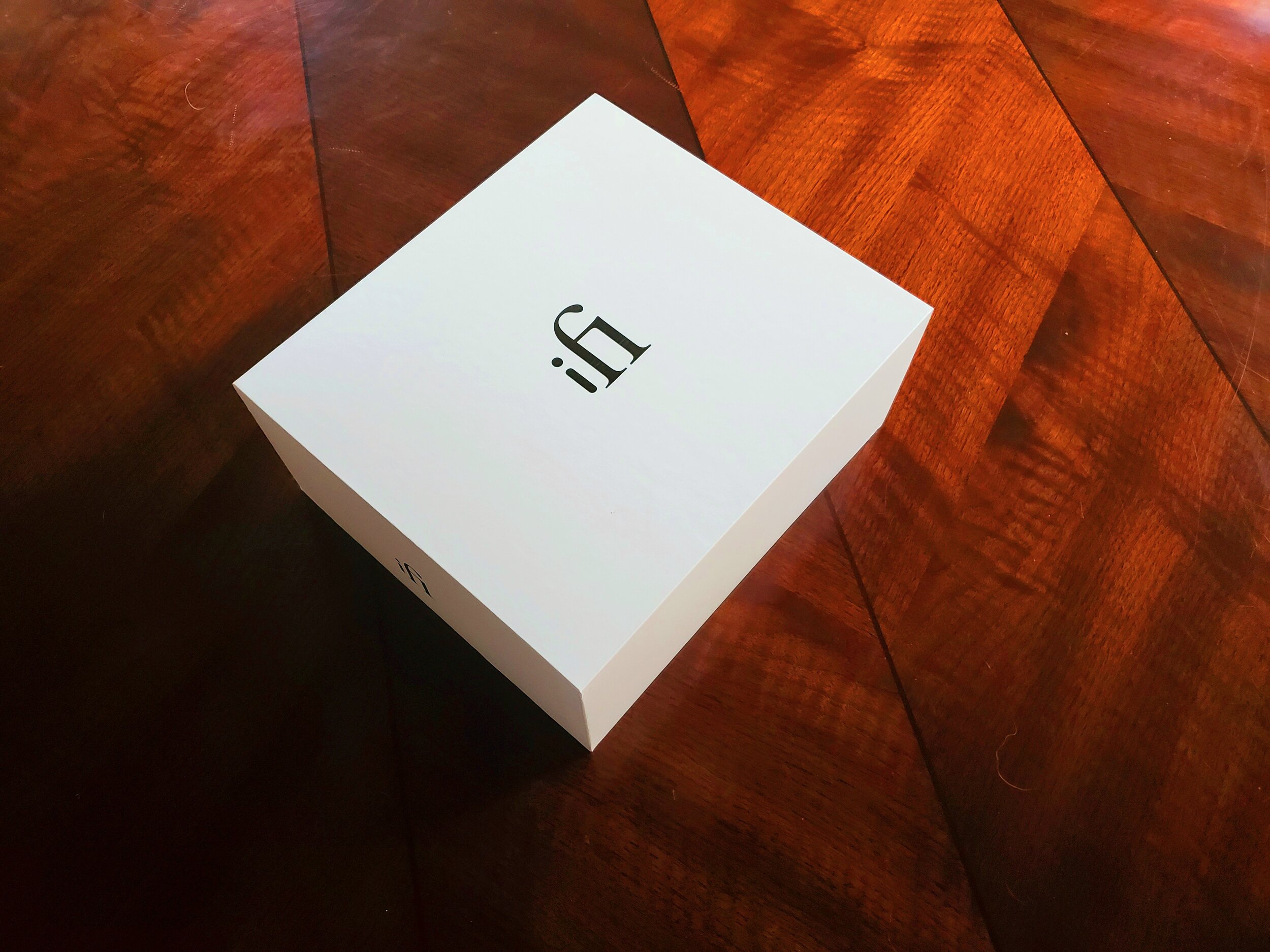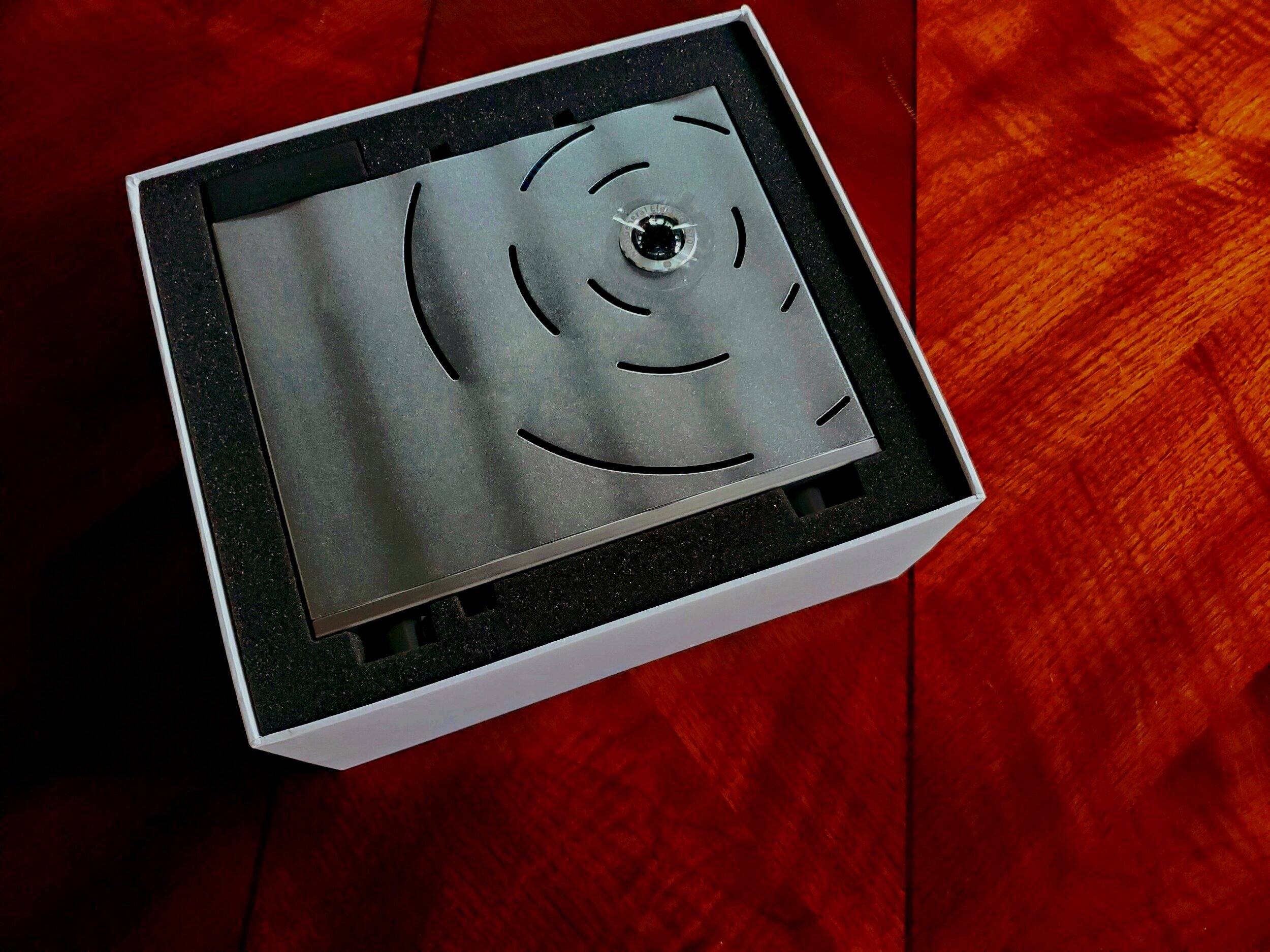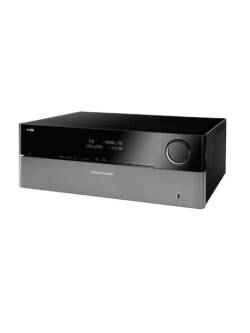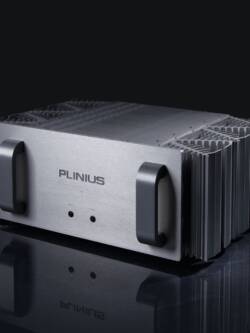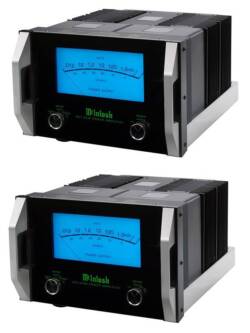Focal Clear MG Headphones and iFi Pro iDSD DAC
Original price was: R138,000.00.R52,000.00Current price is: R52,000.00.

Focal Clear Mg headphones
More often than not, friends want to know how to get audiophile sound with one or two simple moves. The easy answer is a great pair of headphones hooked up to a DAC and laptop/phone. “Get some Focal headphones” is usually the first thing out of my mouth, and the new Mg is “audiophile-in-a-box” easy to recommend.—Jon Iverson
Focal Clear Mg review
Open-back headphones that live up to their name Tested at £1399 / $1490 / AU$2199
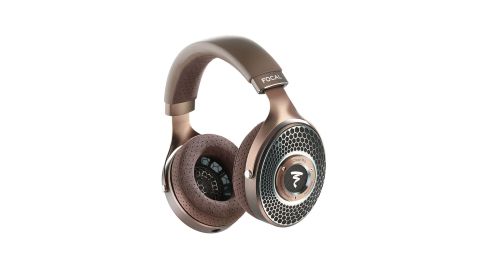
What Hi-Fi? Verdict
Exceptional headphones with an informative, refined and entertaining sound, coupled to excellent comfort and build
Pros
- +Expressive and entertaining presentation
- +Excellent comfort
- +Terrific build and finish
Cons
- -Standard cable is just 1.2m long
- -Lots of sound leakage
- -Lack of isolation from noise
Why you can trust What Hi-Fi? Our expert team reviews products in dedicated test rooms, to help you make the best choice for your budget. Find out more about how we test.
The Focal brand may have been established by building great speakers, but its reputation has clearly been enhanced since headphones were added to the repertoire in 2012.
Since then, it has produced a string of high-quality contenders that can stand toe-to-toe with the best from the established competition. Its latest pair is the Clear Mg, high-end, open-backed models that aim to set the standard and be one of the best over-ear headphones at their price. So, are they?
Build
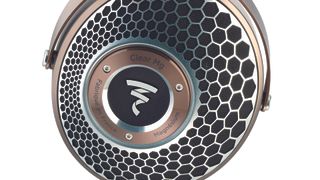
Straight away, these headphones impress. They come in luxurious packaging that screams quality and feels every bit the high-priced item. They are impressively stylish, though some people may prefer a more low-key appearance.
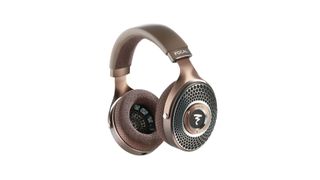
Type Circum-aural open-back headphones
Driver 40mm ‘M’-shaped magnesium dome
Impedance 55 ohms
Sensitivity 104dB
Frequency response 5Hz – 28kHz
Cables 1.2m cable with 6.35mm adapter, 3m 4-pin XLR cable
Weight 450
Even so, there’s no denying the high standard of build and finish. The quality of the materials is excellent, from the leather used on the thick, cushioned headband to the microfibre cloth on the cosseting earpads. We love the intricate hexagonal metal detailing on the open-backed earcups, not to mention the durable feel of the overall structure.
At the heart of the Clear Mg is a new full-range 40mm magnesium-coned drive unit. Magnesium has been chosen for its blend of lightness and stiffness, while the use of a carefully chosen surround helps to control damping and resonant behaviour.
You’ll find a tough carrying case along with a choice of two detachable leads in the plush packaging. There is a 1.2m option with a 3.5mm jack (and 6.3mm adaptor provided), as well as a 3m, 4-pin XLR alternative.
While the inclusion of the balanced XLR lead is commendable, we wish the company had also added a longer lead with the 3.5mm connector in the box. Many otherwise suitable headphone amplifiers don’t have a balanced output – our reference Chord Hugo TT2 is a good example – and sometimes it’s just not that convenient to sit close to the system. It’s possible to buy a longer lead from Focal but that will cost £129 ($190) more. It’s a pretty hefty sum for something that should be included in the box. At least the cables are of a revised design that transmits less movement noise than before.
- Our pick of the best audiophile headphones you can buy
Comfort

In use, the Clear Mg are comfortable. They are nicely shaped and inward pressure is firm but well-judged. They weigh around 450g, which is par for the course, but the wide, cushioned headband and well-designed earpads manage to spread that weight well.
A word of warning, though: these Focals are open-backed, meaning they leak quite a lot of sound. If you sit in the same room as others, they will hear what you’re playing. Equally, your listening experience could be disturbed by any noise other people make – something to keep in mind if you’re planning on taking these headphones out and about.
An open design is not all bad news, of course. In our experience, such an arrangement tends to result in greater transparency and dynamic expression thanks to the lack of an enclosure and all its innate resonances and unwanted stored energy.
Any headphones at this level are likely to be highly revealing performers, so don’t let the inclusion of a 3.5mm jack and relatively short lead tempt you into using your phone as the primary source. While the Clear Mg have a relatively gentle impedance of 55 ohms and generous 104dB/W/m sensitivity, which means they will produce decent volume levels in most set-ups, you really need quality electronics to justify their expense.
We use our reference Naim ND555/555PS DR music streamer as our main source but have a Technics SL-1000R turntable and Apple MacBook Pro serving as able back-ups. For the amplification, we use Burmester’s 088 pre-amp (equipped with dedicated headphone output) and Chord’s mighty Hugo TT2 desktop DAC. We also have Chord’s Poly/Mojo music player on hand to see how the Focals perform with a high-quality, portable source.
Sound

The answer turns out to be very well indeed. The Poly/Mojo pairing is detailed and exciting and these Focals make that clear. Initial listening shows up a slightly hard and sharp edge in the lower treble region, but this eases off in use to leave an etched but informative sound. Still, it’s best to avoid forward or aggressive electronics.
We listen to Jay-Z’s Blueprint 3 set and enjoy the clarity on offer. These headphones certainly live up to their name by delivering a refined yet explicit sound that makes it easy to follow low-level instrumental strands in the busy production. There’s plenty of punch on offer and lows are rendered with grip and texture.
Rhythms are delivered in a surefooted and controlled manner rather than with overt exuberance, but there’s still enough in the way of drive to keep us entertained. The overall presentation retains an easy-going charm that makes longer listening sessions a breeze.
The Focal’s transparency is highlighted by the sizable lift in performance when we switch to our reference Naim streamer/Burmester amplifier combo. Here, we’re aware of a greater sense of control and dynamic expression. There’s clearly even more information and we’re pleased with the way the Focals arrange it with control and composure.
Tonally, they’re full-bodied in a manner that eludes most rivals, and this presentation results in instruments and voices coming through in a more natural and engaging manner. The overall balance is a little on the fuller, rounded side, but not so much that it affects the Focal’s ability to convince.
We move to some large-scale classical music in the form of Mahler’s Symphony No.2 ‘Resurrection’ and are pleased with the Focal’s solid and powerful rendition. It’s rare that headphones can communicate sonic authority so well.
Stereo placement is precise and stable, though still much more in the head than a typical set of speakers. The open-backed design gives the Clear Mg an openness and sense of space that every closed-back alternative we’ve tried has clearly lacked.
We enjoy the headphones’ ability to communicate the orchestra’s power and the way dynamics build to a crescendo without sounding restrained. There’s little obvious sense of the headphones struggling when the music becomes demanding and that speaks highly of their ability to remain poised under pressure.
Verdict
Focal has done a terrific job with the Clear Mg. They’re talented performers that stay comfortable over extended listening sessions. Add excellent build and finish into the equation and we think they’re right up there with the best at the price. Highly recommended.
SCORES
- Sound 5
- Comfort 5
- Build 5
MSRP: $1,490
 Focal has become a mainstay in the hi-fi headphone market since the 2016 release of its first true, Made in France, audiophile headphone, Elear. Since that time, Focal has developed newer, improved headphones and has been known to even correspond to feedback from headphone & hi-fi communities online. We’ve heard what Focal can engineer in its extreme high-end headphones using Beryllium drivers found in their top-end cans like Utopia and Stellia. But for more mainstream audiences, Focal’s Clear and Elegia have become fan-favorites. Enter Clear MG, 2021’s new and improved Clear headphones by Focal.
Focal has become a mainstay in the hi-fi headphone market since the 2016 release of its first true, Made in France, audiophile headphone, Elear. Since that time, Focal has developed newer, improved headphones and has been known to even correspond to feedback from headphone & hi-fi communities online. We’ve heard what Focal can engineer in its extreme high-end headphones using Beryllium drivers found in their top-end cans like Utopia and Stellia. But for more mainstream audiences, Focal’s Clear and Elegia have become fan-favorites. Enter Clear MG, 2021’s new and improved Clear headphones by Focal.
According to one engineer at Focal, the original Clear was named for a description given during a listening session where engineers were putting the final touches on tuning a new headphone. They were described as “clear”, so clear in fact, designers thought it might be suitable for Focal’s Pro Audio team that makes Focal studio monitors and headphones for content creators. When Focal improved on what has grown into its most popular open-back headphones, Clear the company decided to release two versions of its new Clear headphone. Hence, Clear MG and Clear MG Pro were born.
The new Clear MG is an open-back headphone made in what’s become the familiar image of Focal’s high-end line with solid aluminum yoke and all. But Clear MG was designed to bring virtually the same clear sound signature that made original Clear a favorite, S-Tier headphone. It’s difference is in its improved, more sensitive all-magnesium driver, upgraded from the original aluminum/magnesium driver found in Clear. Focal may have borrowed its naming convention from the opening titles of the show Breaking Bad, using the elemental MG in its title. The result is MG presents a bit more dynamic range and high-frequency detail, otherwise the overall sound signature in the OG Clear is much the same.
Clear MG is sold in two forms. The first is for casual hi-fi listening, the regular Clear MG, and for audio professionals there’s the Clear MG Pro. I have it on good authority (one of the Focal engineers that designed it) that the Clear MG Pro version is the same headphone as Clear MG, but it includes different peripherals for the pro market. The Clear MG Pro is esthetically designed to match Focal’s Pro line with the same red-and-black highlights as its former premium pro headphone, Focal Listen Professional. So, if you’re looking for a Focal Clear MG, you essentially have a choice in color and peripherals in the same great Clear sound.
IFI PRO IDSD HEADPHONE AMP/DAC/STREAMER REVIEW
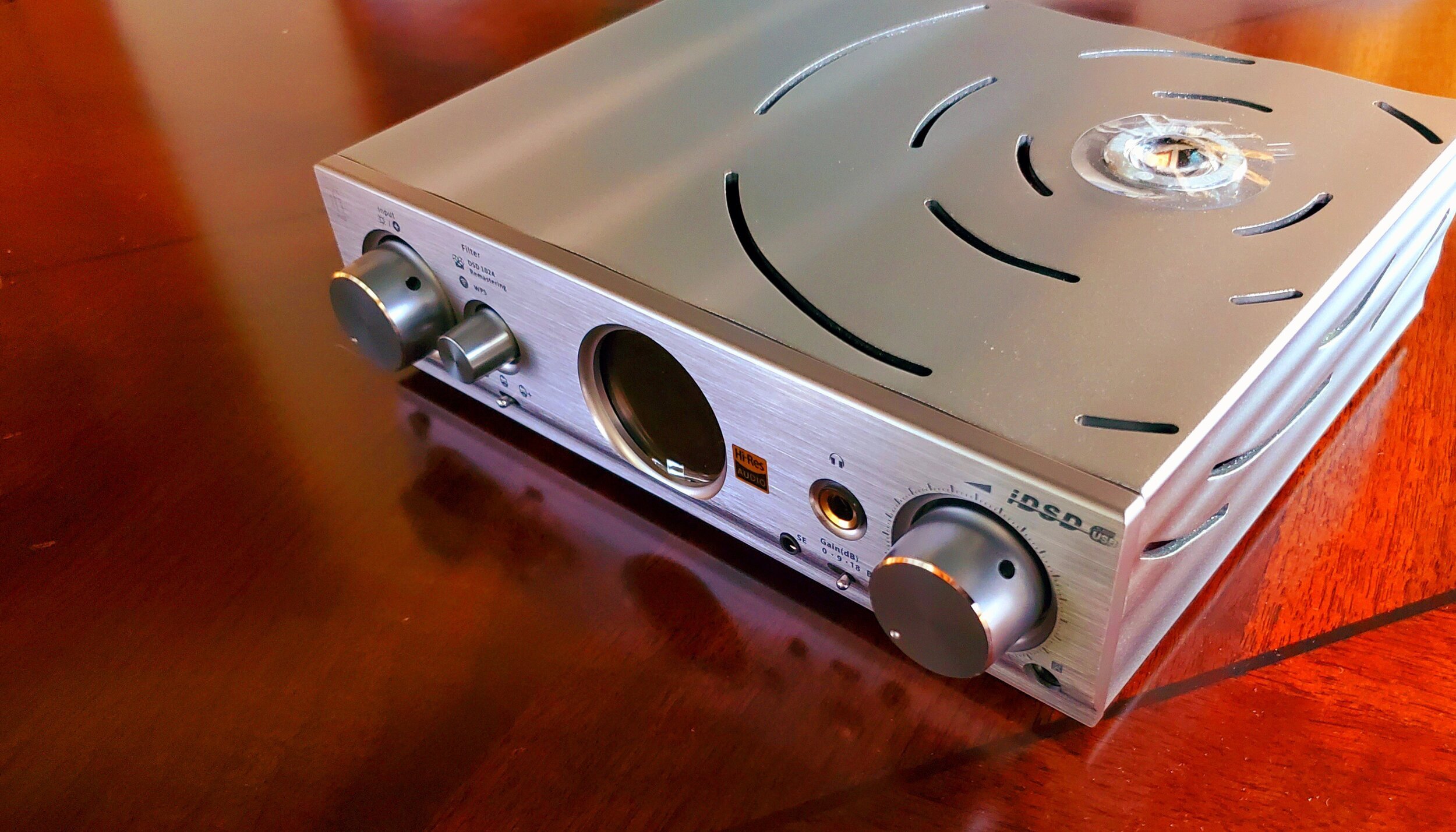
A CORNUCOPIA OF WONDROUS MUSICALITY!
As I had mentioned in the review of the iFi Hip-DAC, iFi Audio since its inception has been very conscious of what we refer to here as the Glorious Age of Accessible Music (GAAM)—access to millions of songs available for listening at home or On-The-Go (OTG). And as a result iFi Audio has developed a number of solutions ranging from the Nano iOne to the Nano iDSD Black to the Hip-DAC to the xDSD to a host of other products for OTG or at-home listening.
This brings us to the review of iFi Audio’s brimming-with-options flagship the Pro iDSD DAC/Headphone Amplifier/Streamer ($2,499). The Pro iDSD is without question an at-home listening component, that will avail to its owner, access to near Yottabytes of music, across every current format—MP3, MP4, PCM, DSD, DXD, MQA, etc.
Additionally, the iFi Audio Pro iDSD provides several filters, for dialing in one’s own personal musical preference, as well as a choice of three “tunings”—Class A solid state (JFET), Tubed (General Electric 5670) or Tubed+ (General Electric 5670 w/reduced negative feedback) from which to chose. And when the ability to upsample any track to either DSD512 or DSD1024, on-the-fly, across all of the above filters/outputs is added, there are basically thirty (30=3x5x2) music shaping “algorithms” from which to chose. But there’s more! The Pro iDSD can be wired directly to an Ethernet connection, where it can “play (music) from a router or NAS (Network Attached Storage)” or it can be utilized for Apple’s Airplay. This is, of course, quite spectacular for those who prefer options!
The time spent with the Pro iDSD was time well spent, in that it offered, as listed above, a plethora of options, wonderful musicality and quite good transparency across all of its options, and it played well with many partners ranging from headphones (dynamic, planar) to In-Ear-Monitors (IEMs) all of which it drove beautifully.
Also, the iFi Pro iDSD allies well to iOS, Android, Mac, and PC alike and to them it will deliver a cornucopia of musical options, that, to date, has no equal. In this respect, the Pro iDSD is a good place to start one’s head-fi adventure or to continue one’s head-fi adventure, as headphones and IEMs alike will, inevitably, mate well.
REFRAIN: Unlike most reviews, this review will be non-sequential, as it will start with how the headphones actually sound and not the process of physically “undressing” them and/or laying out their various parts, specifications, etc. Think of this review then, as a non-linear movie—Memento, Kill Bill, Arrival, Eternal Sunshine of the Spotless Mind, Terminator etc—that, likewise, starts at the end and winds its way to the beginning.
THE SOUND
The iFi Audio Pro iDSD was paired to our MacBook Pro laptop and to the Rosson Audio RAD-0 (review coming soon) or the Meze Empyrean, as both were approximately within its listed selling price, offered both balanced and single-ended configuration, and were on hand.
Your flavor Sir/Ma’am? As mentioned above, there are numerous options from which to chose when listening to the Pro iDSD and one’s headphones. And as a reviewer it is, generally, our mandate to provide explanation, if not insight to the various musical options. However, time constraints, word limits, and other pressing reviews would combine to put the kibosh—put an end to; dispose of decisively—doing all but three of the “tunings,” which were those that we found most compelling. The first tuning (T1) was the standard, MOSFET output-stage with “BitPerfect” (44.1 – 192kHz, always used for 352.8 – 768kHz) PCM filter, and no upsampling. The second (T2) comprised the “Tube” output stage with the “Gibbs Transient Optimised (GTO)” filter and DSD512 upsampling. And the third tuning (T3) comprised “Tube+” with the GTO filter and DSD1024 upsampling.
Across all of the selected tunings the Pro iDSD was always musical, though increasingly transparent when T2 and T3 options were selected, perhaps, as a result of the GTO filter in combination with increased DSD upsampling (512, 1024).
A favorite song of mine, for decades now, for reviewing equipment is Shirley Horn’s Beautiful Love (You Won’t Forget Me, Verve Reissues). A poor performance is when Shirley’s voice is threadbare, microdynamics are unresolved, sibilant, the guitar is muted, unnatural, and the harmonica is flat, lacking extension, and a natural sense of decay. The Pro iDSD as allied to the Meze Empyrean render Shirley’s voice, her articulation of words and phrases, the microdynamics therein, the guitar, and the harmonica as rich, resplendent, superb.
T1 Tuning (Solid State, BitPerfect, No Upsampling): Beautiful Love via this tuning is beautifully rendered, musical, and natural. Shirley’s microdynamics are clearly resolved, sibilance free, and the harmonica is natural, as it floats in the background, and has a good sense of decay.
T2 Tuning (Tube, GTO, DSD512 Upsampling): In this tuning all of the above apply, but there is more. There is greater refinement in Shirley’s voice, it is more natural, tone and timbre are more saturated, richer across voice, guitar, and harmonica. And there is an analog-like warmth infused across the entirety of the song.
T3 Tuning (Tube+, GTO, DSD1024 Upsampling): Interestingly, all of the above and yet even more, though this is decidedly a music lovers journey! Additional detail is freed but in a manner that is very musical, the soundstage has expanded, and there is a Single-Ended-Triode (SET) richness that is compelling. And Shirley’s voice is even more emotive and nuanced with a good deal more texture.
All three of iFi Audio’s Pro iDSD tunings beautifully rendered this time tested review disc, whereas quite a few high-end two channel stereo systems failed and some miserably so. In this respect, technology has come a long way.
The iFi Audio Pro iDSD’s volumetric cube—its soundstage—is large, though with the Rosson Audio RAD-0 planar headphones it was cavernous—very wide, deep, and of good height. There is a very good level of naturalness, transparency, and refinement even before any of the “tunings” are implemented and the dynamics, separation, and positioning are exceptional.
The Pro iDSD was allied to the Rosson Audio RAD-0 or the Meze Empyrean planar headphones across the various frequencies and for the various tunings as detailed below.
BASS
I’ve selected for review of the bass region Eiji Oue’s rendition of Stravinsky’s Firebird Suite (1919 version): V. Infernal Dance of King Kashchey (Stravinsky, Reference Recordings).
T1: Impact! As the fourth movement begins and it is foundational, it moves air and sets a rather dramatic stage. Or as written in the review of the Rosson Audio RAD-0, the bass “is a gauntlet of subterranean bass notes instigated by a single timpani masquerading as a phalanx of timpani.” The bass of this tuning is taunt, dynamic, with good definition, a generous volumetric cube as soundstage, and quite good separation.
T2: Interestingly, with this tuning the bass is not as impactful, nor as solid, nor as menacing as it was in the T1 tuning. However, tonal and timbral saturation have become richer, more saturated and thus more natural. There is also a greater sense of transparency and texture, which instigates a heightened sense of emotional involvement.
T3: Thunderous impact! Perhaps, increasing the level of remastering to 1024 has not only overcome any diminution of bass as was experienced in T2, but has doubled-down upon it. And there is even greater tonal and timbral accuracy than T2, which conjures an even more corporeal, palpable stage as populated with musicians. Transparency mother to detail and resolution and micro dynamics is ascendent, as the detail from flutes previously muted and distant are now fully represented and alive. Violins rise unattenuated, sweet, and naturally. The emotional engagement is sumptuous and reminiscent of a Single-Ended-Triode (SET) sound.
MIDRANGE
The track selected for review of the midrange is Olafur Arnalds’ Árbakkin (Island Songs, Mercury (Universal France)). I have often gone to this track for its beautiful simplicity and its connection to nature witnessed by birds beyond the building chiming in with the music and its captivating, natural beauty.
A man—poet Einar Georg Einarsson—recites a poem in his native language—Icelandic—in a small, wooden building. It is a language that I do not understand and, nonetheless, Einarsson recital is compelling, poignant, engaging. A piano, Olafur Arnalds at its keyboard, joins him. And soon cello, violins follow to weave musical poetry of their own.
T1: Clear, detailed is the voice of Einar Georg Einarsson with birds punctuating the start of his recital. There is a natural reverberation in this church space and air as Einarsson’s recital is joined by piano and then violins, cello before his recital ends.
T2: Increased timbral and tonal accuracy now bring an analog-like ease and smoothness, that is more natural, more engaging. The piano is fuller and richer, the violins and cello sweet and textured and the reverberation and decay more pronounced, real. And the increased transparency give clearer voice and three-dimensionality to the bird or birds participating from outside.
T3: Transparency is glorious as every movement, every creak of the wooden chairs, seemingly, every sound, that may have been previously obscured, covered beneath a veil, is now set free and in bold relief. Tonality and timbre are richer still which beg greater emotional engagement and a true heartfelt connection to the music. The music is sumptuously rich, in a decidedly SET-like manner. There is a greater volumetric cube, and more space and air, than either T1 and T2 and microdynamics are all nicely improved as well.
TREBLE+
Vilda Frang’s String Trio, who together play the first two movements of this album, on the track Allegro Molto (Veress: String Trio – Bartók: Piano Quintet, Alpha) weave a fabric of atonal rhythmic staccatos, plucks, drums and knuckle raps into a musical fabric that is richly dissonant, provocative, and beautifully played.
T1: With this tuning the instruments are distinct, clear, resonant, and emerge from a black-quiet background with weight, extension, and air, across a sizable soundstage. There is very good immediacy and transparency across this movement.
T2: Via this tuning Allegro Molto is more natural, more textural, more vivid, with greater reverberation and decay as note hang, however briefly, in the air then circulates about the players. There is greater twang now across the strings and all instruments. The various movements of the musicians is now more corporeal, real. And transparency and immediacy are greater still.
T3: The energy, drive is more vivid and, yet, even more natural, more organic, more textural, with reverberation and decay reaching new levels of verisimilitude. This tuning, it appears, has “lifted all boats,” which now float above the blackest of a dead-quiet background. As a result, clarity, separation, speed, inner detail, immediacy, and microdynamics rise above the other—nested, split-personality tunings of the Pro iDSD. And quite beautifully so, I would say. This is, without doubt, musical nirvana, a glimpse of the “musical grail,” so to speak, for those who consider themselves music lovers first.
THE WRAPPINGS AND ACCESSORIES
The iFi Pro iDSD comes in a printed sleeve that is clean and tastefully done. The inner box embraces print minimalism with simply the iFi logo spot printed in silver, and in large type across its top and sides. It is reminiscent of a high-end department store’s design and branding, and it is quite appealing.
Inside, the top lifted, one finds the Pro iDSD snugly ensconced within its foam housing. Once the Pro iDSD is removed and its top compartment lifted one finds below it three separate compartments. The contents of these compartments:
1 plastic remote with volume controls (only)
1-Power cable
1-15V Power Unit
1-USB-A (male) to USB-B (male) adapter cable
1-Pair of iFi short, RCA interconnects
1-Wifi antennae
1-Toslink adapter
1-Plastic flat-head screwdriver
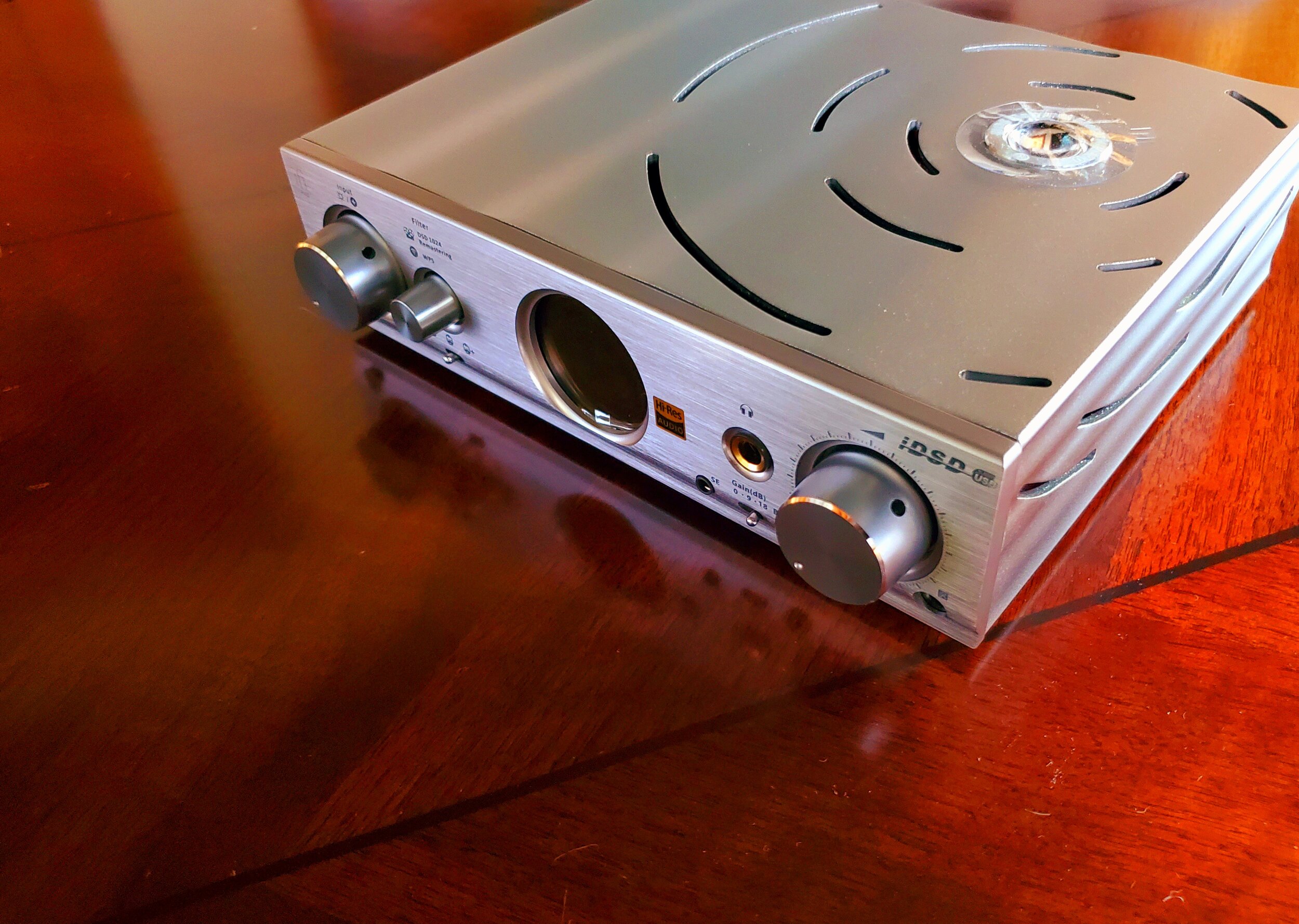
DESIGN—LOOK AND FEEL
The design of the Pro iDSD is straightforward industrial, with a rectangular body fitted with heat vents, that are designed in the manner of expanding, dotted, concentric ‘circles.’ The circles expand from a window which exposes its tubed treasures (2-NOS GE 5670). The circular vents rise and fall over an undulating wave pattern on the Pro iDSD’s top face. Ripples across a pond of windblown water, perhaps? It is a desktop solution for all but the most hardy of OTG/Coffee Shop/Office Head-fiers.
The front and back faces of the Pro iDSD are, literally, chock-full of digital inputs, outputs, and knobs, with a round OLED display center-front that provides the digital lay of the land with regard to digital filter, sampling rate, upsampling rate, and selected input.
All in all, it is a clean, functional outer case design with a dizzying amount of bells, whistles, options, that give the appearance, at least on its back face, that things have been shoved together on too little real estate. This is, of course, from a design perspective. Functionally, this is a veritable candy store for audiophiles, music lovers, and experimentalist, who may well be pleased with all that the Pro iDSD has to offer.
Description
FOCAL SPECIFICATIONS
- Product type : Open-back headphones
- Loudspeakers :
15/8″ (40mm) Magnesium ‘M’-shaped dome - Frequency response (+/- 3dB) :
5 Hz – 23 kHz - Harmonic distortion rate : 0.25 % @ 1 kHz / 100 dB SPL
- Impedance : 55 Ω
- Maximum SPL (peak@1m) :
104 dB SPL
FUNCTIONALITY
Given the immensity of the functional options set that the Pro iDSD as preamp, network streamer, headphone amplifier, and DAC has to offer, perhaps it is best, in the interest of brevity (and word length), to break down its raison d’être—reason for being—directly from its front and back panels.
The Pro iDSD’s front panel, from left to right:
LED: In the upper, left-hand corner is an LED which provides indication for warming up (green), solid state mode (white), tube mode (orange) and protection mode (red).
Power/Standby: In the lower, left-hand corner is a small button, partially flush, that facilitates ON/STANDBY/OF.
Input Selector: To the right of the aforementioned buttons is a larger button responsible for brightness (press), polarity (hold), and input options as listed below:
-
Wifi/Ethernet/Hard Disk/Micro SDHC
-
USB (computer)
-
Coaxial/Optical
-
XLR
-
BNC
Digital Filter: To the right of the selector button is this smaller button, which provides digital processing via Bit-Perfect (non-oversampling), PCM Upsampling which upconverts to 705.6/768kHz using four digital filters:
-
Bit-Perfect+ (no digital filtering applied, SINC rolloff corrected
-
Gibbs Transient Optimised (minimum filtering, no pre-ringing, minimum post-ringing, 32 taps)
-
Apodising (modest filtering, no pre-ringing, modest post-ringing, 128 taps)
-
Transient Aligned (max filtering, max pre-ringing, max post-ringing, 16,384 taps)
The last digital processing choice is DSD Remastering, which converts the incoming signal to either 1) DSD512 or 2) DSD1024. Remastering is engaged by depressing the button—once for DSD512 and a second time for DSD1024.
Output Mode: Below the Digital Filter knob is a toggle switch which allows a user to select between three output modes:
-
Solid State (Class A, JFET based circuitry)
-
Tube (Class A, tubed based circuitry featuring two GE5670 tubes)
-
Tube+ (Class A, tubed based circuitry featuring two GE5670 tubes w/reduced negative feedback)
Given the number of Digital Filters (5–inclusive of Bit-Perfect), the number of DSD Remastering choices (2), and the number of Output Modes (3) there are thirty (30) listening permutations that can be dialed in “On-the-Fly.” This is, well, brilliant!
OLED Display: As mentioned above, the OLED display provides the digital lay-of-the-land with regard to digital filter, sampling rate, upsampling rate, and selected input.
Headphone Inputs: To the right of the OLED display and in a triangular formation can be found three headphone inputs:
-
6.3mm (top of the triangle)
-
3.5mm (left base point of the triangle)
-
4.4mm (right base point of the triangle)
Headphone Gain Selection: At the middle of the base of the Headphone Input triangle is a selector switch, which allows for 1) 0dBs of gain 2) 9dBs of gain or 3) 18dBs of gain.
Analogue Volume Control: Completing the front panel’s wealth of knobs/buttons, switches, and inputs is a volume control knob, that can be manually adjusted or adjusted via the supplied remote control.
The Pro iDSD’s back panel inputs and outputs and others will be ganged together from left to right and will come with an explanation when necessary.
Outputs: The Pro iDSD features both 1) Balanced and 2) Single-Ended outputs for connecting to an amplifier.
Output Selector: To the right of Outputs is an Output Selector knob which can set the output for home or studio use across the following settings:
-
HiFi Fixed
-
HiFi Variable
-
Pro Fixed
-
Pro Variable
Inputs: The Pro iDSD features numerous inputs which allow for connections between computers, digital transports, USB storage devices, Micro SDHC cards, Network Attached Storage (NAS) devices, and professional consoles. A listing of the inputs includes:
-
Ethernet
-
USB-A (external hard disk)
-
USB-B (computer)
-
Coaxial/Digital Input (CD transport)
-
Micro SDHC
-
AESS/EBU (XLR) (CD transport, Digital Audio Workstation)
-
BNC (CD transport, clock synchronization)
-
Wi-Fi antenna
Other: Includes Clock Sync functionality, power connection, and DC Loop-Out connections.
THE SPECIFICATIONS
Sample rates: PCM up to 768kHz.
DSD up to 49.152MHz (DSD1024).
DXD and double-speed DXD (2xDXD)
Inputs: USB (for DSD, DXD and sample rates above 192KHz)
AES3 (XLR – single link).
S/PDIF (coaxial/optical combo).
BNC multifunction (S/PDIF in or sync input)
Outputs: Balanced XLR at 4.6V (+15.5dBu – HiFi) or 10V (+22dBu – Pro).
Single-Ended RCA at 2.3V (HiFi) or 5V (Pro).
Headphones 6.3mm & SE 3.5mm Jack at 0.55V/2.1V/5V.
Headphones BAL 2.5mm/4.4mm Jack at 1.13V/4.6V/10V.
Headphones out 1,500mW RMS X 2 @ 64 ohm, 4,000mW max. 2 X @ 16 Ohm
Headphone Output
Impedance: Single-Ended (S-BAL): < 1 ΩBalanced: < 2 Ω
Volume control: Balanced (6-gang) Alps potentiometer, motorised with IR remote control
XLR/RCA outputs can be selected as fixed level or adjusted, 6.3mm headphone jack is always adjusted
Other Functions: Various digital and analogue filters can be selected for DSD and PCM up to 384KHz
PCM Filters: Bitperfect 44.1 – 192kHz, always used for 352.8 – 768kHz.
Bitperfect + 44.1 – 96kHz.
Gibbs Transient Optimised 44.1 – 384kHz.
Apodising 44.1 – 384kHz
Transient Aligned 44.1 – 384kHz
DSD filters: Fixed 3rd order analogue filter @ 80kHz with correction for DSD’s -6dB gain
Gain (headphone section): User-selectable: 0dB, 9dB and 18dB
Dynamic range: 119dBA (solid-state, PCM, -60dBFS)
Output power: Pro iDSD 4.4mm socket. (16 Ω, balanced/single-ended): >4200mW
/1>1,575mW.
Pro iDSD 2.5mm socket. (16 Ω, balanced/single-ended): >4000mW
/1>1,500mW
Output voltage: (600Ω, balanced/single-ended): >11.2V / >5.6V
Input voltage (Pro iDSD): DC 9V/6.7A – 18V/3.35A
Input voltage (iPower+): AC 85 – 265V, 50/60Hz
Power consumption: < 22W idle, 50W max.
Dimensions: 213 (l) x 220 (w) x 63 (h) mm
Weight: 1980g (4.37 Ibs)
